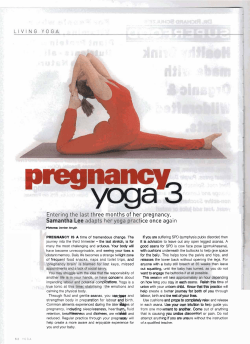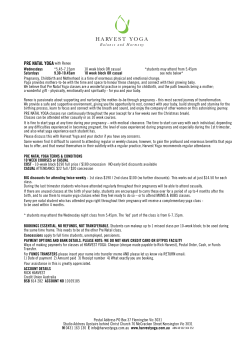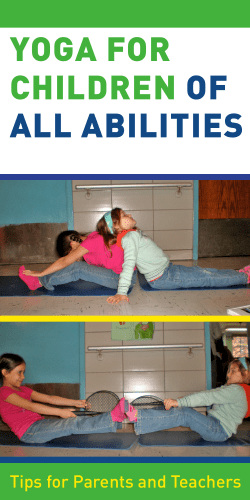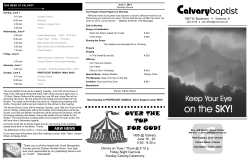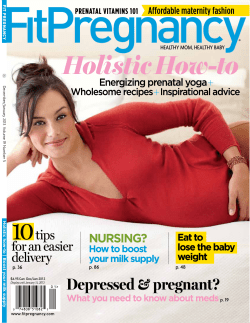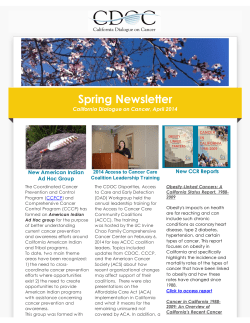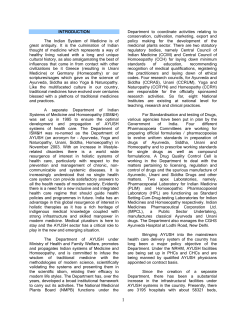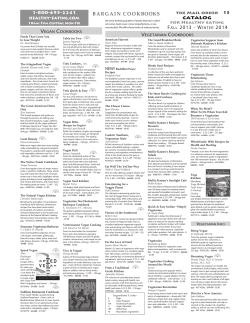
Abrams AI. (1979). Transcendental Meditation ... response to a critique. Criminal Justice and Behavior. 6(1):...
Abrams AI. (1979). Transcendental Meditation and rehabilitation at Folsom Prison: response to a critique. Criminal Justice and Behavior. 6(1): 13-21. Äcärya Vidhyädhara Çukla, Professor Ravidatta Tripäöhé. Carakasamhitä, Chapter No. II: p 11 & 13, Verses 42 – 51. Alexander CN, Robinson P, Rainforth M. (1994). Treating and preventing alcohol, nicotine, and drug abuse through Transcendental Meditation: A review and statistical meta-analysis. Alcoholism Treatment Quarterly. 11: 1-2, 13-87. Alexander CN. (1993). Transcendental meditation. In R. J. Corsini (Ed.). Encyclopedia of psychology. New York: Wiley Inter-science. Alexander, C. N., Langer, E. J., Newman, R. I., Chandler, H. M., Davies, J. L. (1989). Transcendental meditation, mindfulness, and longevity: An experimental study with the elderly. Journal of Personality and Social Psychology, 57(6): 950-964. Alleyne GAO. (2001) Health and the quality of Life, Pan American Health Organisation (PAHO) Revista Panamericana de Salud Publication, Pan American Journal of Public health, 9(1): (1-6). Altman DG, Gore SM, Gardner MJ., Pocock SJ. (1983). Statistical guidelines for contributors to medical journals. British Medical Journal, 286: 1489-1493. Anand. BK, Chhina GS. (1961). Investigations on yogis claiming to stop their heart beats. Indian Journal of Medical Research, 49: 90-94. Anand. BK, Chhina GS, Singh B. (1961). Studies on Shri Ramanand Yogi during his stay in an airtight box. Indian Journal of Medical Research, 49:82-89. Anthony J. (1991). Psychologic aspects of exercise. Clin Sports Med. 10(1): 171-80 171 Atlantis E, Chow CM, Kirby A, Singh MF. (2004). An effective exercise-based intervention for improving mental health and quality of life measures. a randomized controlled trial. Preventive Medicine. 39(2): 424-34. Bedi GS, Gupta N, Handa R, Pal H, Pandey RM. (2005). Quality of life in Indian patients with rheumatoid arthritis. Qual Life Res. 14(8): 1953-8. Bekiari A, Pantazis S, Apostolou M, Nonnati A, Sakellariou K. (2005). The relationship between verbal aggressiveness and state anxiety in sport settings. Ital J Sport Sci. 12: 165-168. Bell F. (2000). The complex 'whole': exploring homoeopathic and spiritual considerations. Aust J Holist Nurs. 7(1): 31-5. Bera TK, .Rajapurkar MV. (1993). Body composition, cardiovascular endurance and anaerobic power of yogic practitioner. Indian Journal of Physiology and Pharmacology, 37(3): 225-8. Berger RE. (2005) Predictors of quality of life and pain in chronic prostatitis/chronic pelvic pain syndrome: findings from the national institutes of health chronic prostatitis cohort study. J Urol. 174(5):1842-3. Bijlani RL, Vempati RP, Yadav RK, Ray RB, Gupta V, Sharma R, etal. (2005). A brief but comprehensive lifestyle education program based on yoga reduces risk factors for cardiovascular disease and diabetes mellitus. J Altern Complement Med. 11(2): 267-74. Blair SN, Kohl HW, Gordon NF. (1992). Paffenbarger RS Jr. How much physical activity is good for health? Annu Rev Public Health. 13: 99-126. 172 Blascovich J, Tomaka J. (1991). Measures of self-esteem. In Robinson JP,. Shaver PR, Wrightsman LS (Eds.) Measures of personality and social psychological attitudes, San Diego, CA I. Academic Press. Bloomfield HH, Cain MP, Jaffe DT. (1975) 'TM‟-Discovering inner Energy and overcoming stress. 8th ed. New York: Delacorte Press. Bottomley A. (2002). The Cancer Patient and Quality of Life. The Oncologist. 7(2): 120-125. Bowes P. (1981). Differing Views of Consciousness in Western and Indian Thought and Their Implications. Journal of Indian Psychology. 3(2): 23-30. Brena SH (1975) Yoga & Medicine. New York: The Julian Press Inc; Brown RP, Gerbarg PL. (2005) Sudarshan kriyä yogic breathing in the treatment of stress, anxiety, and depression: part I-neurophysiologic model. J Altern Complement Med. 11(1): 189-201. Chakraborty SK. (1992). Management by values: towards cultural congruence, Delhi, New York: Oxford University Press. Chohen A. (1989). “Two-Dimensional Man”. Univ. of California press pub. Berkley. City Council Website. 2001. Cohen J. (1977). Statistical Power Analysis for the Behavioral Sciences. New York, Academic Press. Coopersmith S. (1967). The antecedents of self-esteem. Palo Alto. CA: Consulting Psychologists Press. Inc. Psychologists Press. Inc. 95-132. Daftuar CN, Anjali 1997. (1997). Occupational stress, organisational commitment and job involvement in Sattva,Rajas and Tamas personality types. Journal of Indian Psychology. 15(1 & 2): 44-52. 173 Daftuar CN, Sharma R. 1998. Beyond Maslow - An Indian perspective of need-hierarchy. Journal of the Indian Academy of Applied Psychology. 24(1 - 2): 1-8 Das RC. (1991). Standardization of the Gita Inventory of Personality. Journal of Indian Psychology. 9 (1 - 2): 47 - 54. Dasa DG. (1999). Effects of the Hare kåñëa mahä mantra on Stress, Depression and the Three Guëäs. VNN Vaishnava News, Org Networh VNN4267. http://www.vnn.org/usa/US9907/US10-4267.html. Dash M, Telles S. (1999) Yoga training and motor speed based on a finger tapping task. Indian J Physiol Pharmacol. 43(4): 458-62. Denniston D. Williams PM. (1975) 'TM' book. Michigan USA: Versemonger Press. Dillbeck MC, Orme-Johnson DW. (1987). Physiological differences between Transcendental Meditation and rest. American Psychologist. 42: 879-881. Ferris C. (1985) Powers M - Quality of life index: Development and psychometric properties. Adv Nur Sci, 8:15-24 Frankl VE. (1963) 'Man's search for meaning.' New York: Pocket Books. Fuscaldo JM. (2002) Prescribing physical activity in primary care. W V Med J. 98(6): 250-3. Gambhirananda, Swami. (2002). Taittiréya Upaniñat. Calcutta: Advaita Ashrama Garde RK (1975) Yoga Therapy (Principles & Practice). Bombay: D.B.T. Sons & Co. Pvt. Ltd. Gerdner LA. (2000). Effects of individualized versus classical “relaxation” music on the frequency of agitation in elderly persons with Alzheimer‟s disease and related disorders. International Psychogeriatrics, 12(1): 49-65. 174 Gerharz EW, Mansson A, Hunt S, Skinner EC, Mansson W. (2005) Quality of life after cystectomy and urinary diversion: an evidence based analysis. J Urol. 174(5):1729-173. Glaser JL, Brind JL, Vogelman JH., Eisner MJ., Dillbeck, MC, Wallace RK, Chopra D, Orentreich N.etal.,. (1992). Elevated serum dehydroepiandrosterone sulfate levels in practitioners of transcendental meditation (TM) and TM-Siddhi programs. Journal of Behavioral Medicine, 15(4): 327-341. Gouraud F, Dollfus C, Auvrignon A, Leverger G. (2005) Quality of life of adolescents surviving childhood acute lymphoblastic leukemia. Arch Pediatr. Goyandka J. (1999) Śrémadbhagavadgéta Tattvavivecani, Gorakhpur: Govind Bhavan Karyalaya, Gita Press, 15th edition; 14. Goyanka J. (1999) Çrémadbhagavadgétä Tattvavivecané. Gita Press, Gorakhpur. Chapter II to XVIII. Gundappa DV. (1998) “Manku Thimmanna Kagga”. Bangalore. a Kannada Classical Srikantan Pub. Stanza 224-230 Harvey JR. (1983). The effect of yogic breathing exercises on mood. Journal of the American Society of Psychosomatic Dentistry and Medicine. 30(2): 39-48. Holt WR, Caruso JL, Riley JB. (1978). Transcendental Meditation vs pseudo-meditation on visual choice reaction time. Perceptual and Motor Skills. 46: 726. Infante DA, Wigley CJ. (1986). Verbal aggressiveness: An interpersonal model and measure. Communication Monographs. 1986; 53: 61-69. Iyengar, BKS. (1968). Light on Yoga. II Ed. London: George Allen and Unwin, Ltd. Jakobovits L. (1989). The Geometry of Understanding, in NES, TEC Publications. Janke KH, Steder-Neukamm U, Bauer M, Raible A, Meisner C, Hoffmann JC, Gregor M, Klump B, Hauser W. (2005) Quality of Life Assessment in Inflammatory Bowel 175 Disease (IBD): German Version of the Inflammatory Bowel Disease Questionnaire (IBDQ-D; Disease-Specific Instrument for Quality of Life Assessment) - First Application and Comparison with International Investigations. Gesundheitswesen. 67(8-9):656-64. Jayasinghe SR. (2004) Yoga in cardiac health (a review). Eur J Cardiovasc Prev Rehabil. 11(5): 369-75. Jorm AF, Christensen H, Griffiths KM, Rodgers B. (2002) Effectiveness of complementary and self-help treatments for depression. Med J Aust. 20: 176 Suppl: S 84-96. Karunanidhi S. (1996). Self-Esteem. Institute of Correspondence Education. Chennai. University of Madras. Kember P. (1985). The Transcendental Meditation technique and postgraduate academic performance. British Journal of Educational Psychology, 1985, 55: 164-166. Khanna S, Pal H, Pandey RM, Handa R. (2004). The relationship between disease activity and quality of life in systemic lupus erythematosus. Rheumatology (Oxford); 43(12):1536-40. King CN, Senn MD. (1996) Exercise testing and prescription. Practical recommendations for the sedentary. Sports Med. 21(5):326-36. Kothari, LK, Bordia A, Gupta OP. (1973). The yogic claim of voluntary control over the heartbeat: an unusual demonstration. American Heart Journal. 86: 283-284. Kuvalayananda, Swami, Venekar SL. (1971) 'Yoga Therapy' - Its basic Principles and Methods. : Govt. of India.. 176 Kuvalayananda, Swamy (1925, 1928). Cited in collected papers on yoga: Swamy Digambarji (Ed.), Kaivalyadhama, Lonavla, 1975. Laura bly. USA Today Travel. 2003 Aug 15 http://www.oars.com/resources/articles/usatodaytravel -08-2003.html Li F, Fisher KJ, Harmer, P, Irbe, D, Tearse RG, Weimer C. (2004). Tai chi and self-rated quality of sleep and daytime sleepiness in older adults: a randomized controlled trial. Journal of American Geriatric Societ. 52(6): 892-900. Long HJ 3rd, Monk BJ, Huang HQ, Grendys EC Jr, McMeekin DS, Sorosky J, Miller DS, Eaton LA, Fiorica JV. (2005) Clinical results and quality of life analysis for the MVAC combination (methotrexate, vinblastine, doxorubicin, and cisplatin) in carcinoma of the uterine cervix: A Gynecologic Oncology Group study. Gynecol Oncol. Lu WA, Kuo CD. (2003). The effect of Tai Chi Chuan on the autonomic nervous modulation in older persons. Journal of the Medical Sciences Sports and Exercises. 35(12): 1972-6. Manjunath NK, Telles S. (2004). Spatial and verbal memory test scores following yoga and fine arts camps for school children. Indian J Physiol Pharmacol; 48(3):353-6. Manjunath, N. K. & Telles, S. (2001). Improved performance in the Tower of London Test following yoga. Indian Journal of Physiology and Pharmacology, 45(3): 351- 354. Manjunath, N.K. & Telles, S. (1999). Factors influencing changes in tweezer dexterity scores following yoga training. Indian Journal of Physiology and Pharmacology, 43(2): 225-229. 177 Manjunath NK, Telles S. (2004). Visuospatial and verbal memory task scores following yoga and fine arts camps for school children. Indian Journal of Physiology and Pharmacology, 48 (3): 353-356. Manocha R, Marks GB, Kenchington P, Peters D, Salome CM. (2002) Sahaja yoga in the management of moderate-to-severe asthma a randomised controlled trial. Thorax. 57(2):110-5. Manocha R. (2003) Sahaja yoga in asthma. Thorax. 58(9): 825-6. Marutham P, Balodhi JP, Mishra H. (1998). Sattva, Rajas, Tamas (SRT) inventory. NIMHANS Journal. 16(1): 15-19. Marutham P, Balodhi JP, Mishra H. (1998). Sattva, Rajas, Tamas (SRT) inventory. NIMHANS Journal, 1998; 16(1): 15-19. Masthoff ED, Trompenaars FJ, Van Heck GL, Hodiamont PP, De Vries J. Validation of the WHO Quality of Life assessment instrument (WHO QoL-100) (2005) in a population of Dutch adult psychiatric outpatients. Eur Psychiatry. McCaffrey R, Ruknui P, Hatthakit U, Kasetsomboon P. (2005). The effects of yoga on hypertensive persons in Thailand. Holist Nurs Pract. 19(4): 173-80. McCall S. (1975) “Quality of Life”', Social Indicators Research 2, 229-248. Modi. JJ. (1998) “Man, the Unknown – Fleeting impressions of an uncertain mind”. Asta Astronautica. 41(2): 74-81. Mohan V, Sandhu S. (1986). Development of scale to measure sāttvic, rājasic and tāmasic guëa. Journal of Indian Academy of Applied Psychology. (12): 46-52. Mohan V, Sandhu S. (1988). Samkhyan triguëa and EysenckOs dimension of personality. The Vedic Path. 23-28. 178 Morales FG. Understanding Sanatana Dharma. The Philosophical Roots of Yoga, Dharma Central. Mukatibodhananda, Swami. (2001). Haöha yoga pradépika. Munger, Bihar: Yoga Publications Trust. Nagarathna R, Nagendra HR (2003). Yoga, 2nd edition. Bangalore. SVYP. (3):p.6. Nagarathna R, Nagendra HR. (1985). Yoga for bronchial asthma: a controlled study. Br. Med. J. (291): 1077. Nagarathna R, Nagendra HR. (2003). Yoga, 2nd edition. Bangalore: SVYP. p.6 Nagendra HR, Nagarathna R. (1983). Application of Integrated Approach of Yoga – A review. The Yoga Review. 3(4):173 – 194. Nagendra HR. (2000). “Consciousness and Yoga” – Keynote address, Proceedings of the 5th International Conference on Frontiers of Yoga Research and Applications. Bangalore. Swami Vivekananda Yoga Prakashana. Nagendra HR. (2003) The Secret of Action. 1st edn. Bangalore. SVYP. Nagendra, H.R., Nagarathna R. (1997). New Perspectives in stress management. 4th edition. Bangalore. SVYP. Narayana Reddy GN. (2000) “Hindustan and Quality of Life” – Proceedings of the 5th International Conference of Frontiers of Yoga Research and Applications. Bangalore. SVYP. Naveen, KV, Nagarathna R, Nagendra HR. Telles S. (1997). Yoga breathing through a particular nostril increases spatial memory scores without lateralized effects. Psychological Reports, 81: 555-561. Nirmala, G. (1978) Report No. KK/20, Pub: Vivekananda Kendra. Ontario Social Development Council, 1997. 179 Orme-Johnson DW. (1973) Autonomic stability and Transcendental Meditation. Psychosom Med. 35(4): 341-9. Orme-Johnson D, Walton, K. (1998). All approaches to preventing or reversing effects of stress are not the same. American Journal of Health Promotion, 12(5): 297-299. Pathak NS, Bhatt ID, Sharma R. (1992). Manual for classifying personality on tridimensions of gunas – An Indian approach. Indian Journal of Behaviour. 16(4): 10-14. Prabhupada ACBS. (1976) Çrémadbhägavataà, Hong Kong. Bhaktivedanta Book Trust. Prabhupada ACBS. (1986). Bhagavad-Gétä as it is. Los Angeles: Bhaktivedanta Book Trust. Pratinidhi BP. (1966) The Ten Point Way to Health. Bombay: D.B. Taraporevale Sons and Co. Pvt. Ltd. Murthy SJR. (2001). Vägbhaööä’s Añöäìga Hådayam. Varanasi, India: Krishnadas Academy: Chapter II. 20 -31. Quality of Life” Research Unit, University of Toronto. Quality-of-Life Research Center, Denmark. Raghuraj P, Nagarathna R, Nagendra HR, Telles S. (1997) Präëäyama increases grip strength without lateralized effects. Indian J Physiol Pharmacol. 41(2): 129-33. Vani RP, Nagarathna R, Nagendra, HR, Telles S. (1997). Progressive increase in critical flicker fusion frequency following yoga training. Indian Journal of Physiology and Pharmacology. 41(2): 71-74. Ramatirtha, Swami. (1956). In Woods of God Realisation. 8th ed. Varanasi: Rama Tirtha Pratisthan. 180 Ramkrishna M. (1989). “Quality of Life”. Sage Publications. Rao PVK. (1995). YOGA: ITS SCIENTIFIC AND APPLIED ASPECTS. 13(2): 1-12. Rao PVK. Harigopal K. (1979). The three guëäs and ESP. An exploratory investigation. Journal of Indian Psychology. 2(1): 63-68. Ray US, Mukhopadhyaya S, Purkayastha SS, Asnani V, Tomer OS, Prashad R, Thakur L, Selvamurthy W. (2001). Effect of yogic exercises on physical and mental health of young fellowship course trainees. Indian Journal of Physiology and Pharmacology. 45(1): 37-53. Rosenberg M. (1965) Society and the adolescent self-image. Princeton, NJ: Princeton University Press; 15 Roth, R. (1994). Maharñi Mahesh Yogé’s transcendental meditation. Washington, DC: Primus. Rustoen T, Wahl AK, Hanestad BR, Lerdal A, Paul S, Miaskowski C. (2005) Age and the Experience of Chronic Pain: Differences in Health and Quality of Life Among Younger, Middle-Aged, and Older Adults. Clin J Pain. 21(6):513-523. Sabina AB, Williams AL, Wall HK, Bansal S, Chupp G, Katz DL. (2005) Yoga intervention for adults with mild-to-moderate asthma: a pilot study. Ann Allergy Asthma Immunol. 94(5):543-8. Sahasi G, Mohan D, Kacker C. (1989). Effectiveness of yogic techniques in the Sahay BK. (1986)Yoga and diabetes. J Assoc Physicians India. 34(9):645-8 Sarasvati Swami. (1975) Yoga for vital beauty. Delhi: B.1. Publications. Satyanarayana M, Rajeswari KR, Rani NJ, Krishna CS, Rao PV. (1992). Effect of Santhi Kriya on certain psychophysiological parameters: a preliminary study. Indian Journal Physiology and Pharmacology, 36(2): 88-92. 181 Schipper H. (1990) Guidelines and caveats for quality of life - measurement in clinical practice and research. Oncology, 1; 4: 51-7. Shannahoff-Khalsa DS, Beckett LR. (1996) Clinical case report: efficacy of yogic techniques in the treatment of obsessive compulsive disorders. Int J Neurosci. 85(1-2): 1-17 Sharma R. (1999). Self-concept and job satisfaction in Sattva, Rajas and Tamas personalities. Journal of Indian Psychology. 17(2): 9-17. Singh R. (1971). An inventory from Mahäbhärata. Indian Journal of Psychiatry, 13: 149-161. Sloman R. (2002). Relaxation and imagery for anxiety and depression control in community patients with advanced cancer. Cancer nursing, 25(6): 432-435. Swami Gambinrananda, (2000), Muëòaka Upaniñat, 4th ed. Himalayas, Swami Mumukshananda, President, Advaita Ashrama, Mayavati, Champawat. Swami Lokeswarananda. (1998), Chändogya Upaniñat, 1st ed. Kolkatta: The Secretary, The Ramakrishna Mission Institute of Culture. Swami Lokeswarananda, (1995), Praçna Upaniñat, The Ramakrishna Mission Institute of Culture, Calcutta. Swami Lokeswarananda. (1995), Praçna Upaniñat, 1st ed. Kolkatta: The Secretary,The Ramakrishna Mission Instsitute of Culture. Swami Lokeswarananda. (1996), Taittiréya Upaniñad, 1st ed. Kolkatta: The Secretary, The Ramakrishna Mission IInstitute of Culture. Swami Lokeswarananda. (1998), Chändogya Upaniñad, 1st ed. Kolkatta: The Secretary, The Ramakrishna Mission Institute of Culture. Swami Lokeswarananda. (2002), Kaöha Upaniñat, 3rd ed. Kolkatta: The Secretary, The Ramakrishna Mission Inststitute of Culture. Swami Lokeswarananda. Çvetäçvatara upaniñat, , p. 64, 6 Swami Sarvananda. Isavasya Upaniñad (Translation with notes). p 1 – 3, 21-21. 182 Swami SS. (1965) Yogic Therapy. Gauhati: Umachal Yogashram. Swami Vishnu Devananda. Haöha yoga pradépikä. p. 17 – 18. Taimini IK. The Science of Yoga: The Yoga süträs of Pataïali in Sanskrit. Quest Books. 1999. Taimini IK. (1986). The Science of Yoga. Madras: The Theosophical Publishing House. Taimini, I. K. (1995), The Science of Yoga, 8th ed. Chennai: The Theosophical Society. Telles S, Desiraju T. (1991). Oxygen consumption during pranayamic type of very slow rate breathing. Indian J Med Res. 94:357-63.. Telles S, Hanumanthaiah B, Nagarathna R, Nagedra HR. (1993). Improvement in static motor performance following yogic training of school children. Percept Mot Skills; 76(3.2):1264-6. Telles S, Hanumanthaiah BH, Nagarathna R, Nagendra HR. (1994). Plasticity of motor control systems demonstrated by yoga training. Indian J Physiol Pharmacol; 38(2):143-4. Telles S, Nagarathna R, Nagendra HR, Desiraju T. (1993) Physiological changes in sports teachers following 3-months of training in Yoga. Indian J Med Sci. 47(10):235-8. Telles S, Nagarathna R, Nagendra HR, Desiraju T. (1993). Physiological changes in sports teachers following 3 months of training in Yoga. Indian Journal of Medical Science. (10): 235-238. Telles S, Narendran S, Raghuraj P, Nagarathna R, Nagendra HR. (1997) Comparison of changes in autonomic and respiratory parameters of girls after Yoga and games at a community home. Perceptual and Motor Skills.84; 251-257. Telles S, Ramaprabhu V, Reddy SK. (2000). Effect of yoga training on maze learning. Indian J Physiol Pharmacol. 44(2):197-201. 183 Telles S, Hanumanthaiah BH, Nagarathna R, Nagendra HR (1994). Plasticity of motor control systems demonstrated by yoga training. Indian Journal of Physiology and Pharmacology. 38(2): 143-144. Telles S, Joseph C, Venkatesh S, Desiraju T. (1992). Alteration of auditory middle latency evoked potentials during yogic consciously regulated breathing and attentive state of mind. International Journal of Psychophysiology, 14: 189-198. Telles S, Nagarathna R,Vani RP, Nagendra HR. (1997). A combination of focusing and defocusing through yoga reduces optical illusion more than focusing alone. Indian Journal of Physiology and Pharmacology, 41(2): 179-182. Telles S, Vempati, RP, Reddy, SK. (2000). Effect of yoga training on maze learning. Indian Journal of Physiology and Pharmacology, 44(2): 197-201. The President, Sri Ramakrishna Math.The Båhadäraëyaka Upaniñat, Chennai:. Uma K, Lakshmi YS, Parameswaran EG. (1971). Construction of a personality inventory based on doctrine of 3 guëäs. Research Bulletin. (6): 49-58. Vani PR, Nagarathna R, Nagendra HR, Telles S. (1997). Progressive increase in critical flicker fusion frequency following yoga training. Indian J Physiol Pharmacol; 41(1): 71-4. Ventegodtl S, Hilden J, Merrick J. (2003) Measurement of Quality of Life I. A Methodological Framework. Scientific World Journal. 13(3):950-61. Visweswaraiah NK, Telles S. (2004) Randomized trial of yoga as a complementary therapy for pulmonary tuberculosis. Respirology. 9(1): 96-101. Wallace RK, Dillbeck M, Jacobe E, Harrington B. (1982). The effects of the transcendental meditation and TM-Sidhi program on the aging process. International Journal of Neuroscience. 16: 53-58. 184 Wallace RK. (1970). Physiological effects of Transcendental Meditation. Science. 167: 1751-1754. Wallace RK, Benson H, Wilson AF. (1971). A wakeful hypometobolic physiologic state. American Journal of Physiology, 221: 795-799. Wenger MA, Bagchi BK, Anand BK. (1961). Experiments in India on „voluntary‟ control of the heart and pulse. Circulation, 24: 1319-1325. WHOQOL Group. 1998. The World Health Organization Quality of Life Assessment (WHO QoL): development and general psychometric properties. Soc. Sci Med. 6(12): 1569 – 85. WHOQOL HIV Group. (2004). WHOQOL-HIV for quality of life assessment among people living with HIV and AIDS: results from the field test. AIDS Care; 16(7):882-9 Wolf DB. (1998). The Vedic Personality Inventory, A study of the guëäs. Journal of Indian Psychology. 16(1): 26-43. Wolf SL, Barnhart HX, Kutner NG., et al.(1996). Reducing frailty and falls in older persons. An investigation of the Tai Chi and computerized balance training. Journal of American Geriatric Society, 44: 489-97. Wolfson L, Whipple R, Derby C, Judge, J, King M, Amerman P, Schmidt J, Smyers D. (1996). Balance and strength training in older adults: intervention gains and Tai Chi maintenance. Journal of American Geriatric Society. 44 (5): 498-506. World Health Organization (1998) Executive Board 101st Session. Resolutions and Decisions, WHA37.13. EB101.1998/REC/l: 52-53 World Health Organization (2002). Reducing risks, promoting healthy life Resolutions and Decisions, WHA55.23: .07-22. Yogendra S. (1972) Yoga Hygiene Simplified. Bombay: Yoga Institute. 185 Yoneda T, Adachi H, Urakami S, Kishi H, Shigeno K, Shiina H, Igawa M. (2005) Health related quality of life after orthotopic neobladder construction and its comparison with normative values in the Japanese population. J Urol. 174(5): 1944-7. 186
© Copyright 2025
